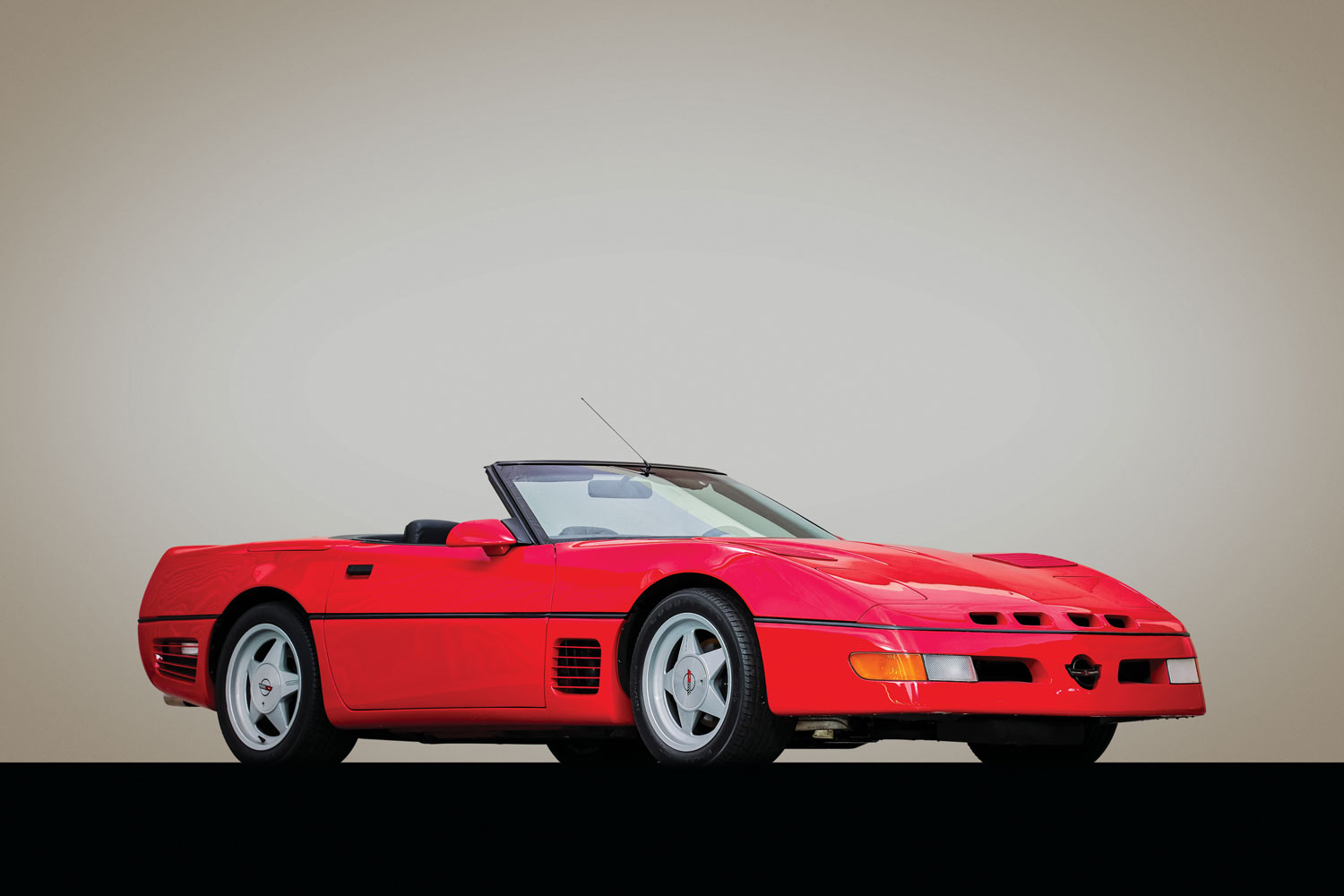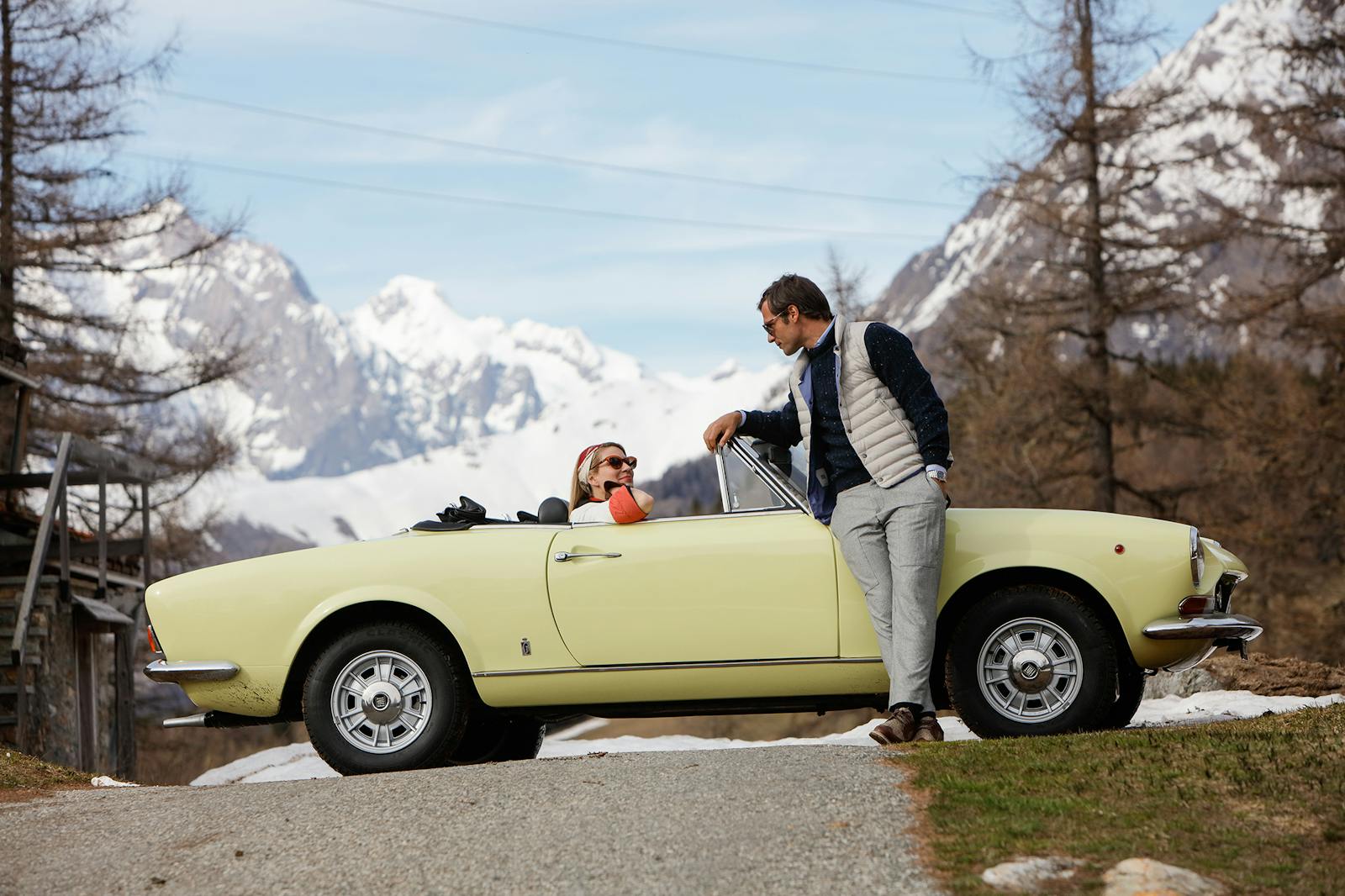The 7 cars we’re watching most at the 2020 Arizona Auctions
It’s January 2020, which means the somewhat lackluster 2019 collector car market is behind us. With the Kissimmee, Florida, auctions already underway and the iconic Bullitt Mustang poised to cross Mecum’s block at no reserve, the year is off to a potentially promising start. The annual auction festivities in the Scottsdale, Arizona, area kick off next week, which means we’ve been poring through auction catalogues, pounding late-afternoon coffees, and burning the high-zinc midnight oil doing research.
Amidst the maddening roster of top-shelf, run-of-the-mill, and lower-tier collector cars descending upon the desert this year, here’s a much narrowed-down list of the 7 cars we’ll be watching the closest in Scottsdale.
2006 Mini Cooper S JCW GP

Bonhams: Lot 104
Estimate: $20,000–$30,000
Arguably the purest, most raw hot-rod interpretation of the modern-day Mini, the GP is the holy grail of the R53-generation mode. It boasts lightning-quick reflexes, a 214-horsepower supercharged engine, and a stripped-out interior with a fat body brace where the rear seats should be. Many don’t consider BMW-era Minis collector cars just yet, but the early cars from the 2000s especially have a loyal fanbase and hold their value well. Without a wealth of auction data, it’s hard to say how Bonhams’ GP will sell, but there’s no doubt the hot hatch’s aftermarket modifications detract from its potential, despite the low miles and rarity. Bring a Trailer has sold several GPs at a variety of prices, but the top sale went to a 4000-mile example that brought $36,000. Next week’s sale in Arizona will be an early window into this young market.
1988 Callaway Corvette Convertible

RM Sotheby’s: Lot 216
Estimate: $75,000–$100,000
Reeves Callaway took the Corvette world by storm in 1987 when he introduced the first-ever modified Callaway Corvette to the world. This twin-turbo-upgraded C4 took the stock V-8 from 240 horsepower and 340 pound-feet of torque to 382 hp and 562 lb-ft, among other subtle improvements. Like Lingenfelter, Callaway offered buyers not only boosted performance but also slightly different looks to give a Corvette owner a degree of unique flair.
“I’m very curious about this one,” says Hagerty auction editor Andrew Newton. “On the rare occasions when twin-turbo Callaway C4 Corvettes have popped up over the past couple of years, they haven’t been especially strong sales. Then again, the cars on offer weren’t excellent examples. ” According to our price guide, a top-condition 1988 convertible averages $43,900, which is more than 30 grand less than this car’s low estimate. Bring a Trailer sold a 17,000-mile 1991 coupe back in 2018 for $49,000. We’ll see if this modified drop-top C4 is the car that kicks these early Callaways into gear.
1993 Viper RT/10

Barrett-Jackson: Lot 442.1
Estimate: N/A
The Viper is the undisputed bad boy of ’90s American supercars. Brainchild of Chrysler president Bob Lutz and design chief Tom Gale, the Viper’s arrival even in concept form at the 1989 Detroit auto show signaled that this was to be a performance machine in a league of its own. The 8.0-liter V-10 was a behemoth, indeed, but the fiberglass-bodied Viper was a handling maestro as well—in the hands of a capable driver.
We’ve seen a number of low-mileage Vipers appear at auction in the last five or so years, and the average price for a 1993 model is $58,900. Examples from 1992 command a few grand on top of that, given their rarity and place in the debut model year.
This is an early-production 1993 car with low mileage, all the documentation you’d want, and a clean history. Later Vipers may have been better cars and more practical, but the early cars like this—no creature comforts, no options, and those chunky ’90s wheels—represent the purity of Chrysler’s vision. “As Vipers come into their own as collector cars, it’s examples like this that serious collectors will seek out,” Newton says.
1970 Chevrolet Corvette ZR1

Worldwide: Lot 9
Estimate: N/A
Combining the 370-hp LT1 V-8 with GM’s M22 “Rock Crusher” close-ratio four-speed gearbox, an aluminum radiator, transistor ignition, and heavy-duty suspension, the ZR1 was the ultimate third-gen Corvette. It’s all business, too—no air conditioning, no stereo, no rear defroster, with unassisted steering and manual windows. Up front you’ll also find the J-56 heavy-duty brake package, including dual-pin power front brake calipers. Worldwide’s ZR1, chassis #194370S405190, is one of 25 ZR1s from 1970. Only 53 were built in total, with eight in 1971 and 20 in 1972.
Aside from the L88 and ZR2, the ZR1 is the most desirable factory-produced C3-generation Corvette. This appears to be a nicely restored example, as well, and our valuation team expects a final bid anywhere from $100K–$200K. It’s been a while since we have seen a C3 ZR1 sell, so this one could be a good indicator the high-end Corvette market’s temperature.
1970 Porsche 914/6 GT
20200107183542)
Gooding & Company: Lot 033
Estimate: $1.0M–$1.3M
Yes, a million bucks for a Porsche 914 sounds a little crazy. To be fair, though, the 914/6 GT is a serious track machine, of which only 16 were factory-built. All 914/6 GT models sported steel fender flares, along with fiberglass deck lids, bumpers, and rocker panels, as well as vented brakes cribbed from the 911 S, a front-mounted oil cooler, and Fuchs alloy wheels. They were truly purpose-built race cars—stiffened chassis, heavy-duty suspension components, larger fuel tanks, and competition-spec interiors. Porsche offered to 914/6 GT customers three states of tune for the 2.0-liter flat-six, ranging from the familiar 911 S output to an all-out “variant three” level producing 210 hp at 8000 rpm, as in the Carrera 6 (906). Gooding’s car has such this highest-tune engine, complete with with twin-plug ignition, Weber 46 IDA carburetors, and camshafts from the 906.
If a 914 that can do 150 mph isn’t enough, this particular car (chassis #1017) has a noteworthy racing pedigree to boot. It was sold originally to French Canadian racer and journalist Jacques Duval and made its racing premiere at the 24 Hours of Daytona in 1971 against larger and faster competition and still finished first in class and seventh overall. It went on to a few other notable competition finishes that season.
It’s no stretch to say that if it sells, this will be by far the most expensive 914 ever to change hands at public auction. The current record belongs to a 1970 914/6 GT that sold in Paris back in 2018, but #1017 has a better racing history and provenance. Our current data indicates a #1-condition (Concours) value of $305,000 for the 914/6 GT, so we’ll have to see just how much Porsche die-hards are willing to bid for this car’s historical bonafides. Aside from the 1970 Le Mans GT-class winning (sixth overall) car, this is probably the most desirable 914/6 GT in existence.
1937 Mercedes 540K Coupe by Hebmüller

RM Sotheby’s: Lot 234
Estimate: $1.0M–$1.5M
The Mercedes-Benz 540 K was the pinnacle of grand tourers when it debuted in 1936. With its 180-hp supercharged straight-eight engine, drop-dead-gorgeous looks, and advanced suspension (double-wishbone and coil spring up front with a swing-axle out back), it was without equal as a means of trans-European travel in dashing style. This particular car was modified by a respected coachbuilder Hebmüller in 1951, transforming it from a cloth-top Cabriolet A into a custom hardtop meant to resemble, in some part, the factory Spezialcoupe. This unique 540 K is emerging into the light after 40 years of hiding in a Nebraska garage, and it’s in impressively original and solid condition.
“The number of high-caliber cars waiting out there undiscovered in unrestored condition is dwindling, so it’s always exciting to see a car like this come out of hiding,” Newton notes. “That said, the Cabriolets and Special Roadsters are more glamorous and desirable, which explains this one’s somewhat-modest estimate relative to other 540 Ks that have sold in Arizona and elsewhere.” If nothing else, we’ll see to what degree this car’s fascinating story adds to its value.
1958 Ferrari 250 GT Cabriolet Series 1 by Pinin Farina
20191226155407)
RM Sotheby’s: Lot 253
Estimate: $6.0M–$7.0M
Perhaps the seminal collaboration for the prolific relationship between Ferrari and Italian coachbuilding legend Pinin Farina, the Ferrari 250 GT is an utterly timeless classic. The music of that 3.0-liter, 240-hp V-12 and triple Weber carbs is simply divine, and the car’s style exudes the peak of sporty elegance in the 1950s. The cabriolet version also marked the end of Pinin Farina’s era as an old-school, boutique operation—the 250 GT cabriolet was among the final models produced in the coachbuilder’s low-volume workshop before Pinin Farina opened its new factory in Grugliasco in 1958. Each of the 37 production models built were unique in some fashion—interior trim and such was all made to order—and the last few units featured open headlights. (Pinin Farina also made three prototypes.)
Originally painted metallic grey, this example was repainted red in the 1980s, during which time its England-based owner also added a Jaeger clock and NART badging. In 1992 the car, now owned by Sheldon Solow of New York, had its by-then-inoperable original engine block swapped out for a replacement from a 250 GT Coupe and installed with the original heads. The correct, numbers-matching head and repaired block wouldn’t be reunited until October 2016, when the current owner commissioned Ferrari specialist Norbert Hofer (who had been servicing the car since 2004) to complete the job.
The #2-condition (excellent) value for the 1958 Ferrari 250 GT Cabriolet Series 1 is $7.0M, versus $7.5M in perfect, concours (#1) condition.
If it sells, this 250 GT cabriolet (chassis #0913 GT) will be the star of Arizona Auction Week. It’s the 25th of 40 total Series 1 drop-tops, and the covered headlights make it even more desirable. Shepherded for the last 20-plus years by a single California-based owner, it’s a known quantity in the high-end Ferrari world, having competed in more than 10 touring events and made appearances at several major car shows. This chassis has been off the market for quite a while, and given that #0913 GT is also fewer than 1000 miles from its engine rebuild, this delicious open-top Ferrari is ready to rally.
Like this article? Check out Hagerty Insider, our e-magazine devoted to tracking trends in the collector car market.

